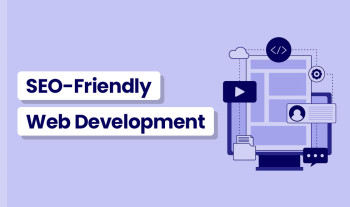Top 10 Web Technologies for Web Developers to Use in 2024
The web development landscape is continually evolving, with new technologies emerging to meet the growing demands of modern users. As we step into 2024, staying updated with the latest web technologies is crucial for developers who want to remain competitive and deliver cutting-edge solutions. This blog will explore the top 10 web technologies that web developers should consider using in 2024.
1. WebAssembly (Wasm)
WebAssembly (Wasm) has gained significant traction as a technology that enhances web performance. It allows developers to run code written in languages like C, C++, and Rust in the browser with near-native speed. This makes it an excellent choice for web applications that require heavy computation, such as gaming, video editing, and data visualization tools. In 2024, WebAssembly is expected to see wider adoption as more developers seek to optimize their web applications' performance.
2. Progressive Web Apps (PWA)
Progressive Web Apps (PWA) continue to be a vital technology in 2024. PWAs combine the best features of web and mobile applications, offering a seamless user experience across devices. They can work offline, send push notifications, and be installed on a user's home screen, making them a powerful alternative to native apps. With the growing emphasis on mobile-first development, PWAs are an essential tool for developers looking to create fast, reliable, and engaging web applications.
3. Web Components
Web Components are a set of web platform APIs that allow developers to create reusable custom elements with encapsulated functionality. This technology promotes code reusability and maintainability, making it easier to build complex applications. In 2024, Web Components are expected to become more popular as developers strive for modularity and scalability in their web applications. They are supported by major browsers and can be used with frameworks like React, Angular, and Vue.js.
4. GraphQL
GraphQL is a query language for APIs that provides a more efficient and flexible alternative to REST. It allows clients to request exactly the data they need, reducing over-fetching and under-fetching issues. In 2024, GraphQL is likely to see increased adoption as more companies recognize its ability to streamline data fetching and improve application performance. Its strong developer community and support from major platforms like GitHub and Shopify further contribute to its growing popularity.
5. JAMstack
JAMstack (JavaScript, APIs, Markup) is an architecture that decouples the frontend from the backend, enabling developers to build fast and secure websites. JAMstack sites are pre-rendered, meaning they can be served directly from a CDN, resulting in faster load times and improved security. As businesses prioritize speed and security in 2024, JAMstack is expected to continue its rise, especially for content-driven websites and e-commerce platforms.
6. Serverless Computing
Serverless computing allows developers to build and run applications without managing the underlying infrastructure. With serverless, you only pay for the compute resources you use, making it a cost-effective solution for scaling applications. In 2024, serverless architectures will likely become more mainstream as developers seek to reduce operational complexity and focus on writing code. Popular serverless platforms like AWS Lambda, Google Cloud Functions, and Azure Functions are leading this trend.
7. TypeScript
TypeScript has become the go-to language for modern web development, thanks to its ability to add static types to JavaScript. This feature helps developers catch errors early, improve code readability, and enable better tooling and refactoring. In 2024, TypeScript's popularity is expected to grow even further, as more teams adopt it for large-scale projects. Its seamless integration with frameworks like React, Angular, and Vue.js makes it a must-have skill for web developers.
8. Single Page Applications (SPA)
Single Page Applications (SPA) have revolutionized the way web applications are built, offering a smooth and responsive user experience. SPAs load a single HTML page and dynamically update content as the user interacts with the app, reducing the need for page reloads. In 2024, SPAs will continue to be a popular choice for building interactive and fast web applications. Frameworks like React, Angular, and Vue.js have made it easier to develop SPAs, and their ecosystems are expected to grow even stronger.
9. WebRTC
WebRTC (Web Real-Time Communication) is an open-source project that enables real-time communication between browsers and devices. It supports video, voice, and generic data transmission, making it ideal for applications like video conferencing, live streaming, and online gaming. As remote work and online collaboration continue to grow in 2024, WebRTC will play a crucial role in enabling seamless and secure communication over the web.
10. AI and Machine Learning Integration
AI and Machine Learning are no longer just buzzwords; they are becoming integral parts of web development. In 2024, developers will increasingly integrate AI and ML models into web applications to provide personalized user experiences, automate tasks, and analyze data. Technologies like TensorFlow.js and Brain.js allow developers to run machine learning models directly in the browser, opening up new possibilities for creating intelligent web applications.
The web development landscape in 2024 will be shaped by technologies that prioritize performance, scalability, and user experience. From WebAssembly's high-performance capabilities to the modularity offered by Web Components, these technologies provide developers with the tools they need to build cutting-edge web applications. Staying ahead of the curve by adopting these technologies will be crucial for web developers looking to deliver innovative solutions in the coming year.
Whether you're a seasoned developer or just starting your journey, embracing these top 10 web technologies will help you stay competitive and create applications that meet the demands of modern users. The future of web development is exciting, and with these tools at your disposal, you're well-equipped to navigate it successfully.










